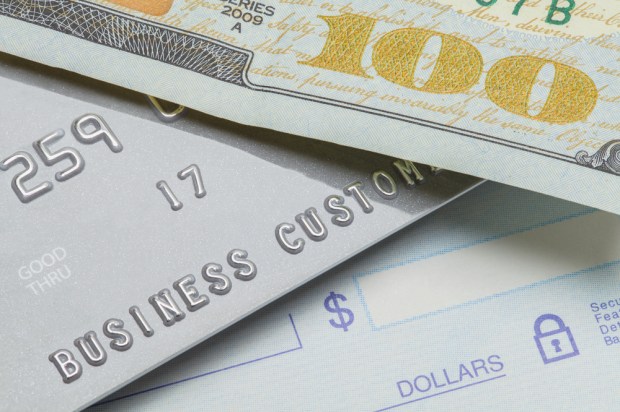More Payment Platforms Mean More Headaches For B2B Sellers

Paper checks may be the No.1 way to pay suppliers in the U.S., but only by a slight majority. ACH, wire, virtual and physical cards, and other rails all come into the mix, particularly as each vie for a chance to take B2B payment market share away from paper.
For vendors, this means managing acceptance of multiple payment rails, often based on what their corporate customers prefer.
Analysis from Mastercard and Karmic Labs published last year suggests this can quickly overwhelm businesses, particularly SMBs.
“A difficulty that arises from using multiple payment mechanisms is the complexity of tracking these payments, especially non-electronic forms such as check and cash,” the report stated. “The use of personal payment products also suggests that some small businesses have not separated their business and personal household finances, making a transparent evaluation of cash flow even more difficult.”
As B2B eCommerce grows in popularity among merchants (BigCommerce data released earlier this month found that 80 percent of merchants accept B2B orders online), companies are less able to ignore their struggle to manage multiple payment rails and payment processors.
“The difficulty managing multiple payment service providers exists for both B2B and B2C eCommerce players,” Oren Levy, founder and CEO of payments company Zooz, noted in a recent interview with PYMNTS. “At their core, merchants want more clients buying a product or service. In order to accomplish that, merchants in the international eCommerce arena need to offer their clients preferred local payment methods.”
B2B sellers expanding into China, for example, have to support payments made via Alipay and WeChat, Levy explained.
“This means offering a variety of payment channels, leading to the challenge of managing and optimizing this global payments operation,” he added.
The strengthening B2B eCommerce market is, in part, a reflection of the internationalization of B2B trade: Selling online means broader access to customers across borders. Localizing payment options is key to customer acquisition and retention, so while managing multiple payment platforms can be a headache, it’s necessary for many sellers.
“Offering various payment methods [means] higher conversions and lower fees,” Levy said. “Today, working with multiple payment channels is necessary for global eCommerce actors.”
Zooz wants to address these issues for online merchants – both B2B and B2C –through PaymentsOS, its open-payments-platform-as-a-service offering. The tool is a cloud-based platform that lets businesses connect and manage various payment providers on a single interface.
The obvious point of friction here is having to manually toggle between an array of interfaces to manage each payment platform that a company uses to accept payment. According to Levy, the current payments landscape is not conducive to efficiency.
“Most of today’s payments infrastructure was built dozens of years ago, some of it dating back to before the internet, and way before the cloud,” he said. “The payments industry is faced with a simple reality: The existing infrastructure was not built for the 21st-century payment scale, volume and complexity.”
In short, managing multiple payment service providers means having to jump back and forth between platforms, which is, in and of itself, a waste of time for professionals and business owners.
A deeper look at this challenge, however, reveals an array of friction related to the management of data stored by those payment platforms, including the inability to access key financial data in an efficient, automated way.
“Using multiple payment channels, without a payments management platform, complicates things for every type of business,” said Levy. “Different payment technologies and reporting tools are used by each provider due to lack of standardization in the industry. The data derived from each payment channel looks vastly different from one to another, making it an ordeal to aggregate, harmonize and analyze and make decisions.”
He noted that payment service providers tend to not facilitate the consolidation of the data they store with data in rival platforms.
“As a result,” added Levy, “businesses end up making decisions based on partial information.”
For B2B sellers, particularly those turning to the internet to scale, the challenge of managing various payment rails and processors is only going to increase. Today, vendors have to balance their own payment rail preferences in accounts receivable, with the payment preferences of their customers’ accounts payable departments – and those two preferences don’t always sync up.
According to Receivable Savvy data, nearly two-thirds of B2B suppliers say they want to be paid via ACH – but 83 percent said their buyers pay via paper check.
Complicating this is the rising number of ePayment platforms that companies can now use to pay their vendors. PayPal, for example, is deepening its presence in the industry by partnering with B2B FinTechs and enabling suppliers that send e-invoices to receive payment. Zelle, the peer-to-peer payment platform designed by financial institutions to compete with Venmo, is gradually increasing its presence in B2B payments, with U.S. Bank now supporting corporate payments via Zelle.
As B2B payments digitize, they accelerate, and B2B commerce players will find that the pressure to manage data streams from multiple payment platforms will continue to grow. According to Levy, failure to address this challenge means businesses will struggle to make their own payment and finance decisions without real-time, unified visibility into their payment data.
“Without a payments management and optimization platform, merchants might find it challenging to aggregate and harmonize data in real time,” he said, “causing a lack of crucial analysis and insights, ultimately leading to a loss of millions of dollars.”
